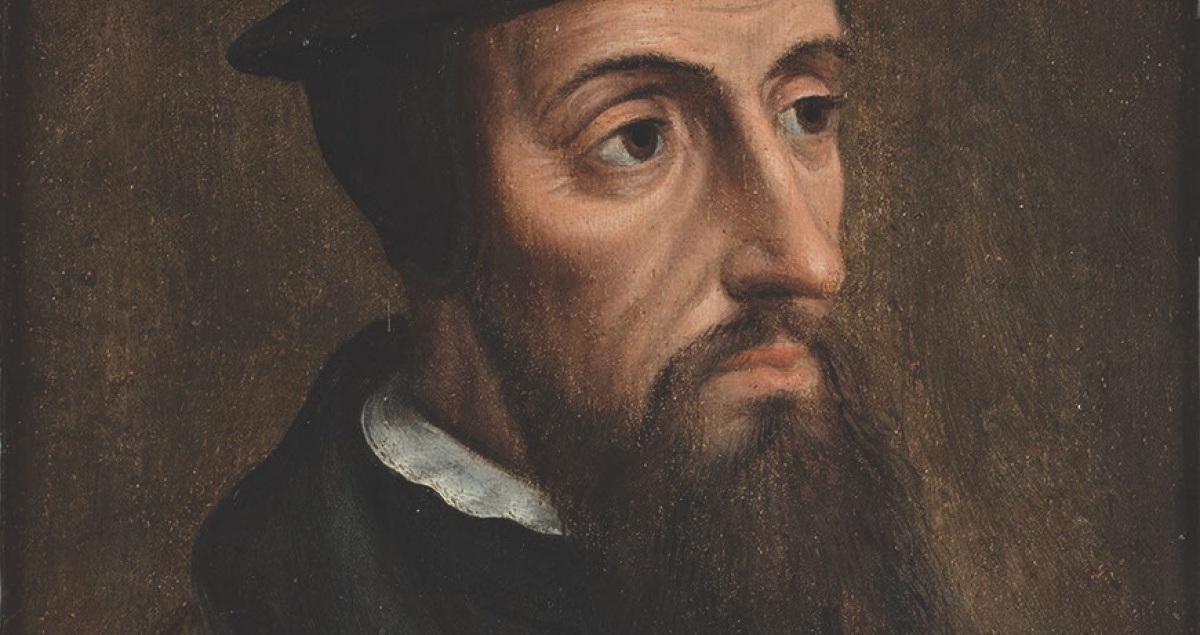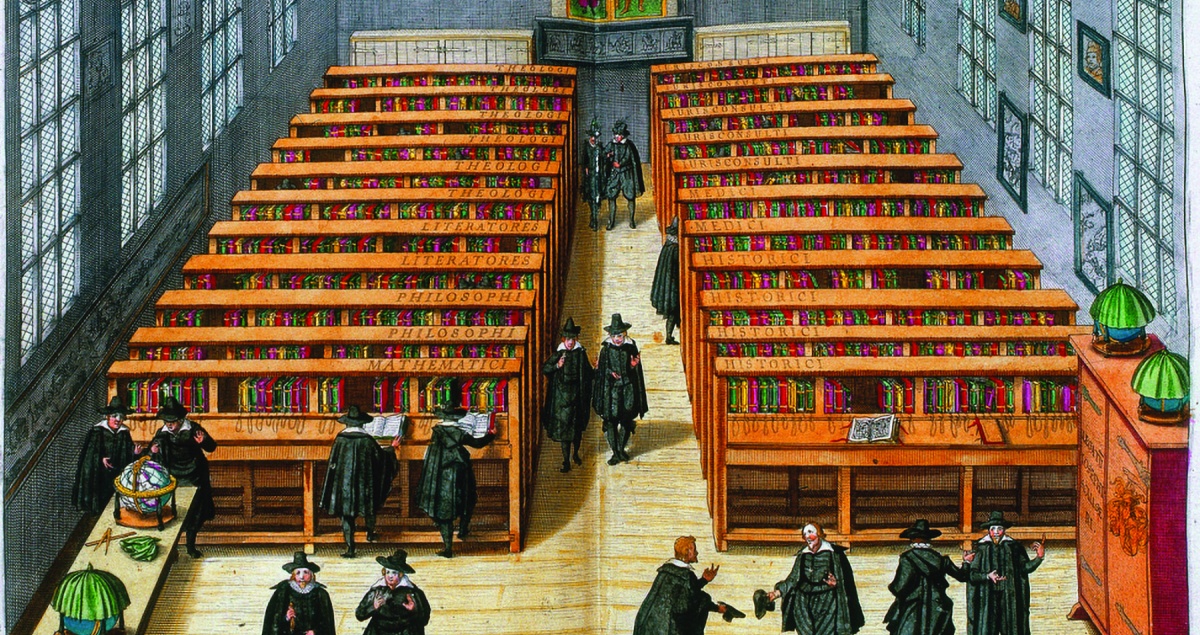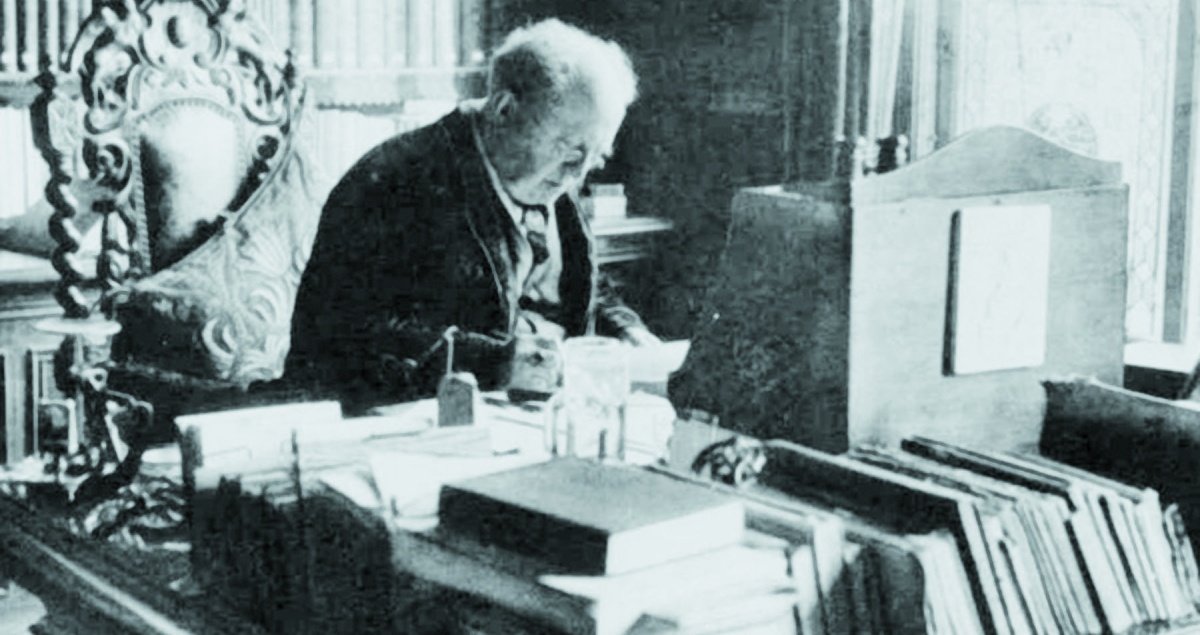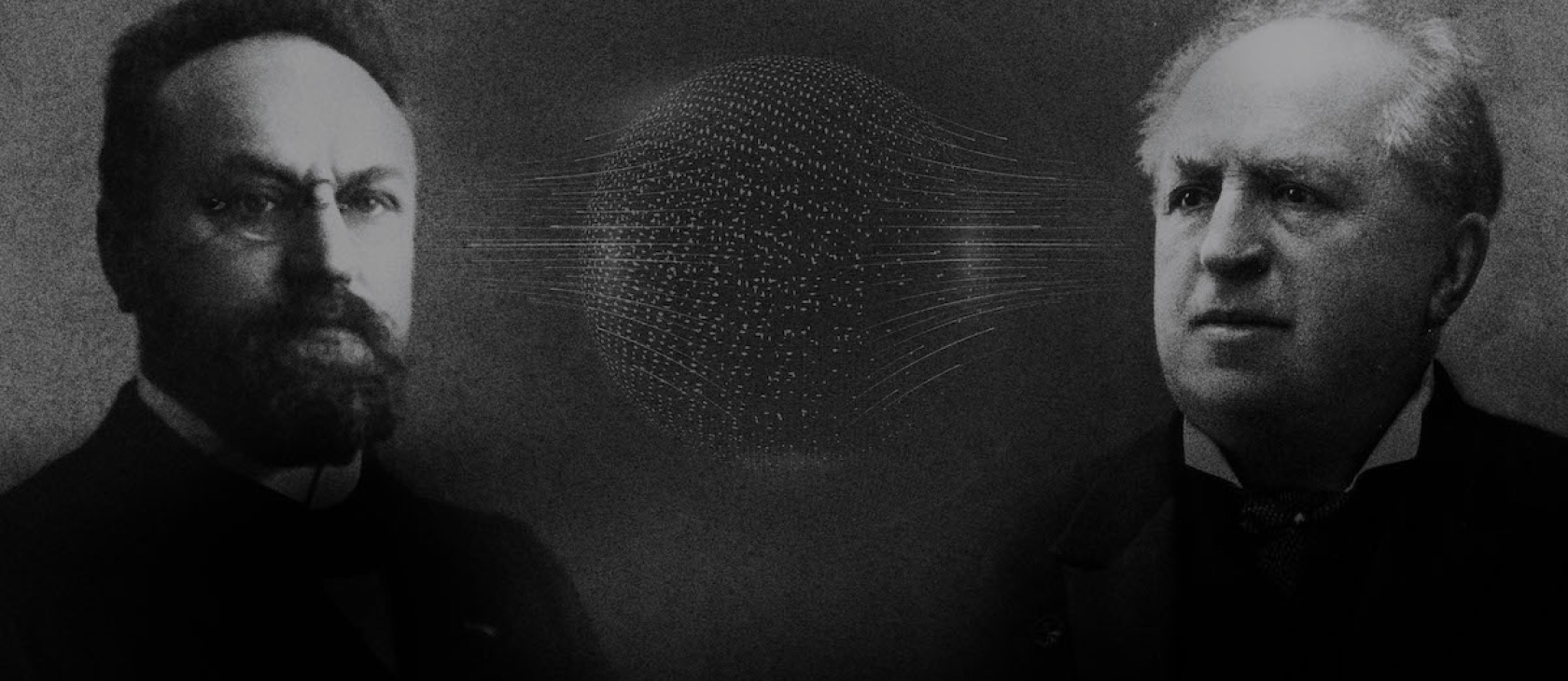Fracture and fragmentation border on cliché in the struggling pluralist democracies of the world, the United States fore among them. We are beset with our differences, amplified and exaggerated as they may be by the echo chambers of our own design, many a product of the technologies of connection that once seemed to hold so much promise to overcome our tribal polarizations. Pessimism is the rule as we slide into the twin dystopias of Alexis de Tocqueville’s famous extremes, of self-centred individuals turning inward to our own journeys of authenticity, and overreaching politics desperately trying to pull back together our fraying social fabric.
Calvinism, particularly the late 19th- and early 20th-century Dutch Calvinist movement known as neo-Calvinism, is not the obvious answer to anyone. But I want to argue in this essay that to answer de Tocqueville’s twin pathologies requires not just a renaissance of social solidarity and of Burkean platoons, or a correction to our systems and institutions and how they shape public order and public justice, but both.
Two primary figures in the neo-Calvinist movement may provide keys to rethinking religion in the public square and how we engage with those who differ with us.
According to Abraham Kuyper, the challenges of our time require, “not only the physician, but most certainly the architect as well.” Restoring and repairing a sense of common life together is about hearts but also about systems. It is about ends but also about means. It is about theological categories, certainly, but also lived models. And this is what neo-Calvinism, particularly its two champions Herman Bavinck and Abraham Kuyper, can offer from their own tumultuous, changing, and fractured time, rife with problems not unlike our own polarization and individualism. Placed alongside our contemporary challenges, their insights sound remarkably fresh—perhaps even ideally suited for our time.
Herein lies some 19th-century wisdom for 21st-century problems, from the neo-Calvinist project of restoration, not repristination, of reformation, not revolution.
Bavinck and Kuyper provide theological categories that offer both a framework and fodder for a renewed common life together. In these, as Calvinist theologians, they drew deeply and distinctly from their own theological tradition, the Reformed tradition. But importantly, these categories are applicable far beyond Calvinist theology, as both Kuyper and Bavinck stress the catholicity of the church.
Kuyper, known for bold, even brash statements about a whole host of matters, was characteristically fulsome in his praise of Calvinism’s truth—perhaps in a way that could prove damaging for ecumenical efforts. In his Lectures on Calvinism,he proclaimed that “in Calvinism my heart has found rest.” Lest we paint a picture of these neo-Calvinists as so devoted to Calvinism that they saw no other way of Christian faithfulness, Bavinck concluded his reflections on his voyage to North America this way: “Calvinism, after all, is not the only truth!” This was not, in its fuller context, a wholly relative statement supporting any number of truths; rather, it was a declaration that the triune Christian God works and moves through many theological traditions. Calvinism, in other words, is not the only way to be Christian.
Nonetheless, both Kuyper and Bavinck were devoted Calvinists and drew critical insights for life in common out of their theological tradition. What did this mean for them? Quite simply, a stress on God’s sovereignty over all of creation. As Kuyper articulated, Calvinism’s “dominating principle” is “the Sovereignty of the Triune God over the whole Cosmos, in all its spheres and kingdoms, visible and invisible.” From this assurance comes three major theological categories that undergird their project of restoration and reformation: sphere sovereignty, common grace, and the imago Dei.
Sphere Sovereignty
In Kuyper’s inaugural lecture upon the founding of the Free University in the Netherlands, he famously declared that Christ’s rule and reign extends to all the square inches of creation. In his Lectures on Calvinism, he continues this line of thinking: Every aspect of creation is directed and designed by God and, importantly, ought to submit to God. Creation is not uniform, but contains an “infinite diversity, an inexhaustible profusion of variations.” In society, this multiformity, to use a favorite word of Kuyper’s, can be seen in the variety of spheres God has ordered in creation.
Kuyper uses the language of “sphere” as a designation for the various institutions of society: education, church, state, family, business, art, and more. In his short biography of Kuyper, Richard Mouw describes this central concept for Kuyper’s thought in this way: a sphere is “an arena where interactions take place, and where some sort of authority is exercised.” While Kuyper never gives us an exact list of the designated spheres in creation, he gives us a clear sense that spheres are distinct areas of cultural and social interaction. These societal spheres may be distinct but they are not disconnected. Because all of creation is the work of one sovereign God, “the cogwheels of all these spheres engage each other, and precisely through that interaction emerges the rich, multifaceted multiformity of human life.” In their distinctions, however, each sphere has its own identity, authority, and norms. The church is not the state, nor does it govern itself in the same way. The family is not a business, nor are relationships structured identically in both institutions. The designs and norms of each sphere are not arbitrary, nor human-made. God himself has designed them and written them into his creation.
The relationship between the authority and norms of each sphere and the ultimate authority, rule, and reign of God, Kuyper argues, can be understood through the concept of “sphere sovereignty.” God’s authority cannot be limited to the church, nor can it be merely mediated through the church. Rather, God’s ultimate authority over all of creation is directly delegated to humanity, in various spheres.

Sphere Sovereignty
In Kuyper’s inaugural lecture upon the founding of the Free University in the Netherlands, he famously declared that Christ’s rule and reign extends to all the square inches of creation. In his Lectures on Calvinism, he continues this line of thinking: Every aspect of creation is directed and designed by God and, importantly, ought to submit to God. Creation is not uniform, but contains an “infinite diversity, an inexhaustible profusion of variations.” In society, this multiformity, to use a favorite word of Kuyper’s, can be seen in the variety of spheres God has ordered in creation.
Kuyper uses the language of “sphere” as a designation for the various institutions of society: education, church, state, family, business, art, and more. In his short biography of Kuyper, Richard Mouw describes this central concept for Kuyper’s thought in this way: a sphere is “an arena where interactions take place, and where some sort of authority is exercised.” While Kuyper never gives us an exact list of the designated spheres in creation, he gives us a clear sense that spheres are distinct areas of cultural and social interaction. These societal spheres may be distinct but they are not disconnected. Because all of creation is the work of one sovereign God, “the cogwheels of all these spheres engage each other, and precisely through that interaction emerges the rich, multifaceted multiformity of human life.” In their distinctions, however, each sphere has its own identity, authority, and norms. The church is not the state, nor does it govern itself in the same way. The family is not a business, nor are relationships structured identically in both institutions. The designs and norms of each sphere are not arbitrary, nor human-made. God himself has designed them and written them into his creation.
The relationship between the authority and norms of each sphere and the ultimate authority, rule, and reign of God, Kuyper argues, can be understood through the concept of “sphere sovereignty.” God’s authority cannot be limited to the church, nor can it be merely mediated through the church. Rather, God’s ultimate authority over all of creation is directly delegated to humanity, in various spheres.
God is directly sovereign over art, science, business, church, family, and every sphere in his creation. Thus, each sphere—in its patterns, rules, norms—must ultimately submit to God’s authority and respect its own bounds and limitations.
Such a claim has radical implications: No human or institution can have ultimate authority over all others; the “perfect Sovereignty of the sinless Messiah at the same time directly denies and challenges all absolute Sovereignty among sinful men on earth, and does so by dividing life into separate spheres, each with its own sovereignty” (emphasis in the original). God is directly sovereign over art, science, business, church, family, and every sphere in his creation. Thus, each sphere—in its patterns, rules, norms—must ultimately submit to God’s authority and respect its own bounds and limitations. A sphere, like the state, argues Kuyper, may “never become an octopus. ... It must occupy its own place, on its own root, among the other trees of the forest.” It is God, after all, who is sovereign, not humans. Such a claim places limitations on the coercive powers of the state, even to forcefully enact those norms which are God’s. As we await that time when all things will fully and rightly submit to the norms God has set out for them, our posture ought to be one of principled pluralism in the public square.
Even as we await God’s coming kingdom, though, God upholds these norms for his world—including every sphere, which continue to be directly accountable to God to fulfill his norms and purposes. In these we can find a sense of both freedom and boundaries in our shared—and interconnected—societal life. Though made hazy by human sin, these norms are still discoverable on account of Kuyper and Bavinck’s next theological category: common grace.
Common Grace
Like all Christians, Bavinck and Kuyper hold both to the reality that God created the world good and that, through Adam and Eve’s act of disobedience, our world is now fallen into sin. Bavinck in his Reformed Dogmatics writes that in this act of disobedience, “history itself changes ... it becomes a history of sin, misery, and death.”
And yet there still are glimmers of good in this world: neighborly kindness, fidelity in marriage, beautiful artwork, the laughter of a child, lyrical poetry, captivating cantatas, and more. Such a list of the good things in this world could go on and on. The reality of life in this world, of course, is that such a list could be paired with the horrible atrocities we witness this side of the fall.
Kuyper and Bavinck make the case that it is a unique grace of God, a common grace, that allows for these good things to persist in the face of the fall’s devastation. Following the fall, God, they argue, continues to providentially uphold and sustain his creation with, as Bavinck puts it, an “economy of divine forbearance and long-suffering.” This work of God, in spite of human sin, can only be called a grace, for it is an undeserved gift to all humanity. Humanity “exists and lives only by the grace of God ... [who] firmly grounds the being and life of creation in a covenant with all of nature and with every living being.”
Our deeply polarized, fractured public square emphasizes difference: in identity, in presuppositions, in context, and more. Without negating important differences, Kuyper and Bavinck’s insistence on a shared gift of God for all humanity, a common grace, ought to lead us to an expectation that—despite differences—we can also find common ground, shared knowledge, and insights to be gained from the “other.” Such commonality is not rooted fundamentality in humanity’s promise and brilliance, but in God’s ongoing goodness toward all his creatures.
Imago Dei
In his common grace, God upholds the creational structures of his world, even as sin rages. Gordon Spykman, a later neo-Calvinist thinker, argues that “the creation order establishes an ontic commonality and solidarity among all peoples.” Even in the midst of deep, postlapsarian differences, this solidarity persists. Not only are we all recipients of God’s unmerited gifts (rain and sun, restraint of sin, civic justice), which certainly gives us the ability to come together, but we also share an “ontic commonality,” a shared reality of our very essence, including being made in the image of God.
Much ink has been spilled by theologians to determine what exactly it means that we are image bearers of the triune God. For some, this is primarily located in the soul. For others, the intellect. For others, our rationality. For others, our call to dominion. Bavinck argues, however, that a person “does not bear or have the image of God, but he or she is the image of God” (emphasis in the original). Rejecting any dualism that may pit body and soul against each other, or amplify only one aspect of our humanness, Bavinck again insists that “nothing in a human being is excluded from the image of God.” The image of God includes our souls, our faculties (our “emotions and passions ... desire and will … thinking and knowing”), our virtues, and our bodies.
But even here, with a holistic articulation of the individual human person as the image of God, Bavinck has not completed what he understands to be the meaning of our imaging God. We do not simply image God as individuals. Rather, “only the whole of humanity is the fully developed image of God, his children, his offspring. The image of God is much too rich for it to be fully realized in a single human being, however richly gifted that human being may be. It can only be somewhat unfolded in its depth and riches in a humanity counting billions of members.” United together in our shared reality of image bearers, we cannot fully understand what it is to be human, or made in the image of God, without each other. “Every human being is himself or herself an image of God,” he again insists, “yet that image is only fully unfolded in humanity as a whole!”
Bavinck’s picture of humanity as the image of God certainly highlights that we have some sense of deep commonality with our neighbor, with the other. But his vision of the imago Dei pushes us beyond simply commonality toward the other. We cannot, he maintains, think of ourselves as merely individuals but instead as part of an organic whole, united in our diversity. We have a better picture of ourselves, and God, together in our diversity. No doubt, not all the diversity displayed in humanity postlapsarian is good diversity, but Bavinck’s understanding of the imago Dei stresses the reality that we were not created homogenously, nor does our shared status as imago Dei wipe out distinctions.
In the difference that often divides, Bavinck’s vision of the unfolding, collective, eschatological nature of the image of God gives us fodder to discern the beauty of diversity and what we might learn from those unlike ourselves.
In theory, sphere sovereignty, common grace, and the imago Dei provide helpful fodder for overcoming the tribal polarizations that seem to afflict our common life. They do not erase differences but instead provide credible and crucial foundations in which differences can be acknowledged and adjudicated. They help us see each other as image bearers, keep watch for points of common interest and concern, and guard our lives against the error of totalizing or deifying any part of life.
Kuyper and Bavinck did this not only as theologians and professors but also as political and social actors. Both men spent their careers both articulating these deep theological truths and applying them in the public square as journalists, pastors, and politicians—Kuyper as the eventual prime minister of the Netherlands, Bavinck as a member of the First Chamber (Senate).

Reformation, Not Revolution
Abraham Kuyper and Herman Bavinck were members of the Anti-Revolutionary Party, a party founded by Kuyper himself in 1879 and one that Bavinck reluctantly became president of when Kuyper assumed his duties as prime minister.
This party, as its name clearly suggests, takes on a central posture of neo-Calvinism: reformation, not revolution. As president of the Anti-Revolutionary Party, in 1905, Bavinck gave a speech that included this striking summary of what reformation, not revolution, looks like in practice. Those who follow the path of reformation, he argues,
go in the new situations in state and society, of philosophy and science, of literature and art, of profession and business; they investigate everything and preserve the good. They are no praise-singers of the past times and do not wail idly about the miseries of the present, but they intervene and reform according to the ideal they face. Even though they know that on earth things will never be set right before the second coming of Christ, and though this protects them from superficial optimism, they still work and do not get tired and never despair. No repristination, no maintaining of the status quo, but reformation is their motto.
Here, Bavinck draws two critical distinctions: An anti-revolutionary posture in society is neither revolutionary, a radical response to the crises of the day that seeks an entirely fresh start, nor repristination, a response that merely seeks to re-create what has been lost or maintain status quo.
Instead, Bavinck and Kuyper’s anti-revolutionary posture was driven by the conviction that God was and is at work in history. Such a posture does not negate the reality that their—and our—context was desperately in need of both a physician and an architect, but, as Bavinck wrote in The Christian Family, it does “distinguish between reality that is safe [healthy] and that which is sick.” To affirm a revolutionary posture is to affirm that all of society is sick, rather than discerning where society is ill; it makes “no distinction between nature and sin and eradicates the good with the bad” (“Christian Principles and Social Relationships”). Because God is at work in his creation, upholding it and continuing to bestow good gifts upon it, we can trust that there is good in society and seek it out, all the while rooting out the bad.
Formative Friendship
Bavinck and Kuyper, in their multifaceted careers in journalism, pastoral work, education, politics, and more; in their particular moment in European history; and out of their theological convictions that drove them into the world to see what God is doing in “every square inch” of creation, were often confronted with deep difference. Rather than simply avoid or absorb different worldviews, they engaged in formative friendships, finding common ground and opportunities to learn from these differences. This is an area where Bavinck shines as an exemplar, so we will briefly examine one relationship: a friendship with Christiaan Snouck Hurgronje.
Bavinck 'prized human contact with conversation partners—even those driven by radically different convictions—and took pains to understand them on their own strongest terms.'
Snouck Hurgronje and Bavinck met while students at the University of Leiden. James Eglinton, Bavinck’s English biographer, describes Snouck as “a theologically liberal student who would become his generation’s most important Dutch scholar of Islam.” The differences between Bavinck and Snouck were vast: Bavinck was an orthodox, conservative Calvinist, and Snouck, when they met, belonged to the mainline Dutch church and later converted to Islam. Despite these differences, theirs was a deep, true, lifelong friendship. We can see intimate glimpses into their friendship through letters that have been preserved, from their youth to their death. Their conversation spans from the day-to-day realities of their lives, to their joys and struggles, to intense intellectual debate. They regularly read and critiqued each other’s work.
As a young man, Bavinck wrote this to Snouck when he completed his Ph.D.:
And so, we have both reached the end of our academic studies. I can only regret that we have gone so far, immensely far, from each other in principle and view of life. And yet my sincere friendship and warm interest will remain with you despite such great difference in insight and conviction. I hope that this difference will become smaller, but I do not yet see this.
So often we shy away from those who differ, resulting in social and intellectual cul-de-sacs. But in this letter, Bavinck demonstrates the opposite impulse: toward one who disagrees, without downplaying the gravity of the disagreement.
Bavinck not only understood a deep personal relationship to be possible in the face of significant worldview differences; he also understood intellectual formation and learning to be both possible and important in the face of deep difference. Later, in another letter to Snouck, he wrote:
We can still learn a great deal from each other and be useful to each other. And precisely because I live among kindred spirits, the correction of opponents who are still friends is all the more indispensable to me.
Rather than simply relishing the affirmation of “kindred spirits,” Bavinck explicitly sought out dissenting voices to help sharpen thought and push him in his convictions.
For all the positives we can take away from Abraham Kuyper, we also must grapple with the reality that—despite his affirmations of the beauty of diversity in creation—his account of racial diversity within humanity was deeply problematic and damaging.
Constructive, formative disagreement and debate take work and deep relational investment. Bavinck was acutely aware of this, as seen in his relationship with Snouck. They did not simply focus on their areas of disagreement, nor did they shy away from them. Bavinck’s posture in friendship with Snouck can be seen time and time again throughout his life. As Eglinton explains, Bavinck “prized human contact with conversation partners—even those driven by radically different convictions—and took pains to understand them on their own strongest terms.” He displayed generosity toward his opponents’ positions even while remaining in disagreement. Bavinck’s work, including his great Reformed Dogmatics,includes considerable reference to and engagement with those with whom he deeply disagrees, often finding ways to highlight areas where their insights are helpful and constructive to his own, very different theological project.
The Bad with the Good
Kuyper and Bavinck have much to contribute to our common life, but none of this is to suggest that there are not troubling aspects of the neo-Calvinist legacy as well that should not be brought into our contemporary challenges. As Vincent Bacote argues in The Spirit in Public Theology, we must “decide what to bring from Kuyper’s era and what to leave in the past.” After all, in Kuyper’s own words, to be within a living tradition
is not to copy the past, as if Calvinism were a petrifaction, but to go back to the living root of the Calvinist plant, to clean and to water it, and so to cause it to bud and to blossom once more, now fully in accordance with our actual life in these modern times, and with the demands of the times to come.
Not only ought we to consider the new ways we can apply insights in a new time but also the ways we can continue to renew, refine, and even reject some insights so they are more in line with scriptural truth.
In this case, there is one aspect of the neo-Calvinist, Kuyperian legacy that must be highlighted: racism and apartheid. For all the positives we can take away from Abraham Kuyper, we also must grapple with the reality that—despite his affirmations of the beauty of diversity in creation—his account of racial diversity within humanity was deeply problematic and damaging. In well-known speeches and writing, including his Lectures on Calvinism, Kuyper perpetuated a racist account of the superiority of European over African ancestry.

Alongside his understanding of the racial superiority of European over African ancestry, Kuyper’s notion of pillarization, one that championed clear separation between various spheres of society, was used by some to promote not only a separation of societal spheres but also a separation, or apartheid, of races. Appealing to the story of Babel, during the apartheid era a report from the white Dutch Reformed Church of South Africa argued that distinctions between people are introduced by God, and thus “the church should avoid the modern tendency to erase all distinctions among peoples.” While sometimes too straight a line is drawn from Kuyper to the clearest example of this idea, apartheid South Africa, it is undeniable that Kuyper’s thought was influential in its development.
Without downplaying where Kuyper went badly wrong, we can also see where Kuyper’s legacy has had a positive effect. Alongside deeply troubling aspects, his message of a gospel that lays claim to “every square inch” has certainly also propelled Christians toward robust cultural engagement in search of the common good.
In the case of this profoundly troublesome aspect of Kuyper’s legacy, Bavinck provides an important corrective. As George Harinck describes, Bavinck “stressed the unity of mankind as an explicit Christian idea” and passed this insistence on to his students, some of whom would go on to be leaders in the anti-apartheid movement.
Abraham Kuyper and Herman Bavinck, together two stalwarts of neo-Calvinism, sound to us contemporary in part, I think, because our own social and political problems are not so dramatically different: dehumanizing political rhetoric, tribalistic fragmentation, institutional transition and degradation, massive social upheaval, and technological transformation; these describe Kuyper and Bavinck’s days as easily as our own.
Our practice and application will doubtless prove very different, but the fundamental posture is not so different: a curiosity underwritten by a commonness in grace, a boldness in friendship and relationships catalyzed by co-image bearers, and an institutional and cultural fidelity fueled by the creative diversity of human work and life in the world. Their goal was not to banish disagreement, even fundamental and difficult disagreements, and ours would be a fool’s errand if so, but to gift to Christians a restatement of Calvinistic principles—of Gospel good news—for reformation and restoration, for a new age. Our 21st-century task is not all that different.




